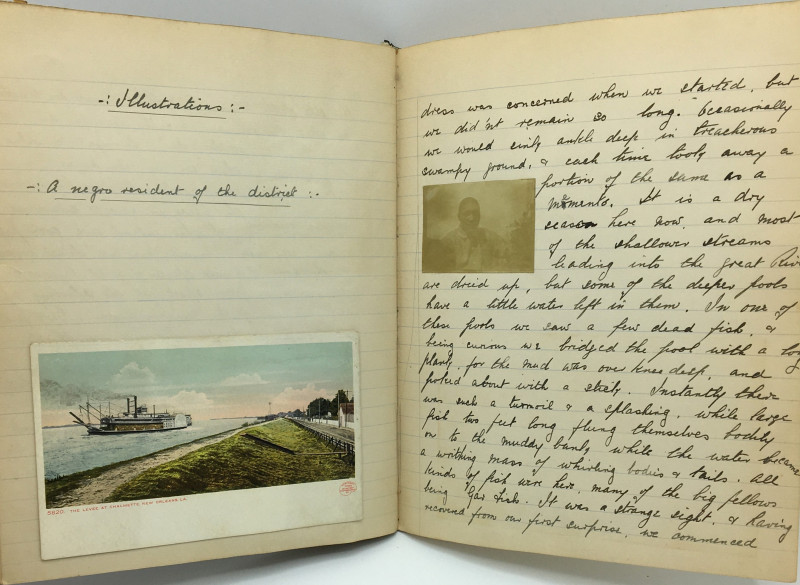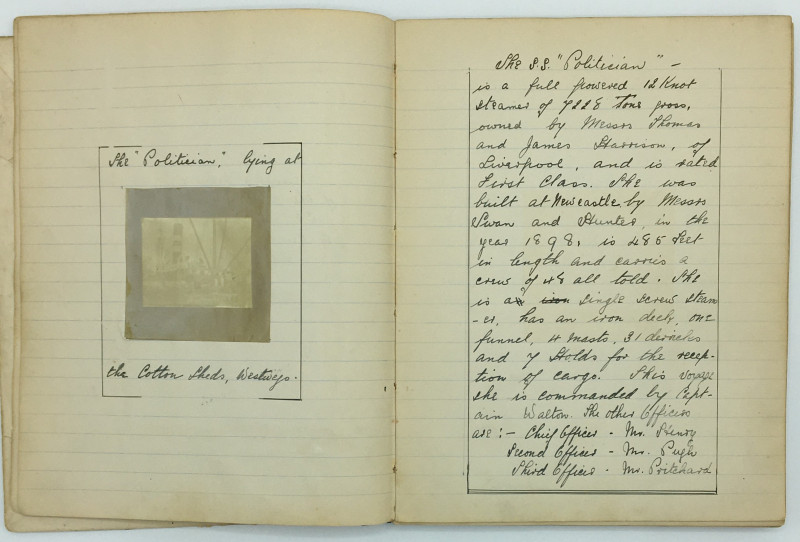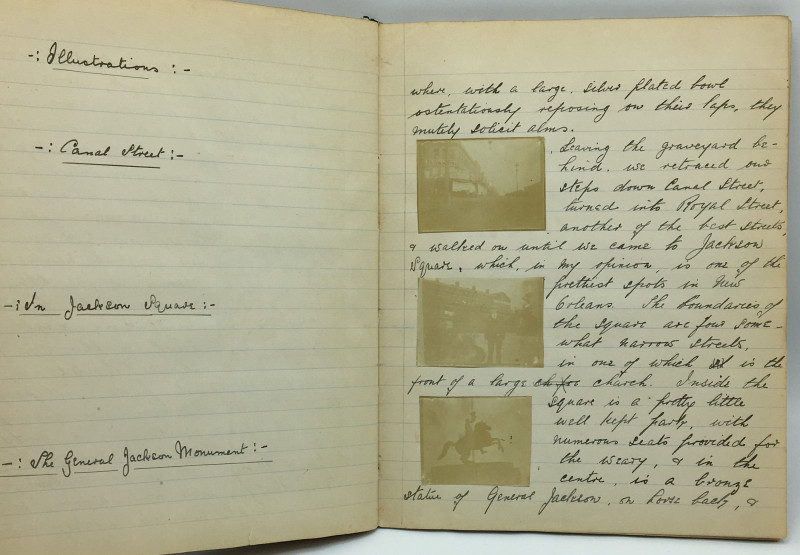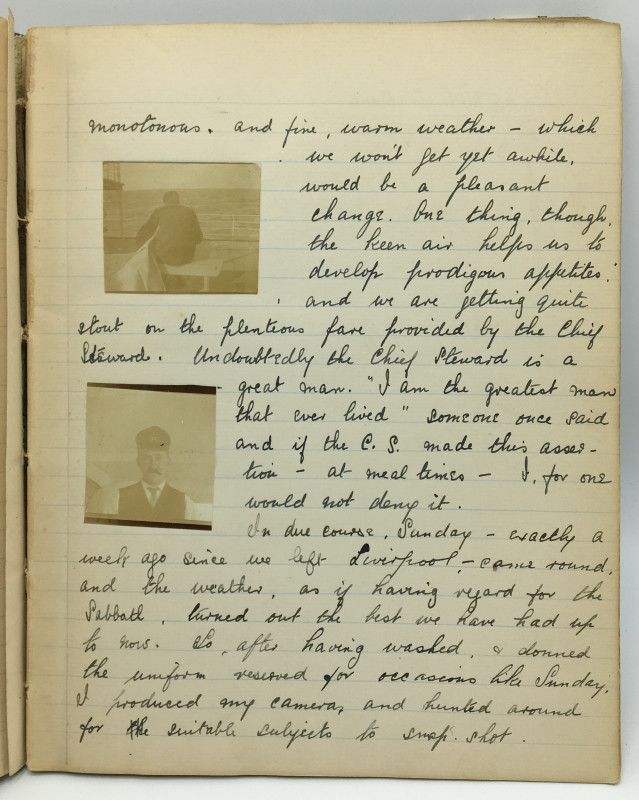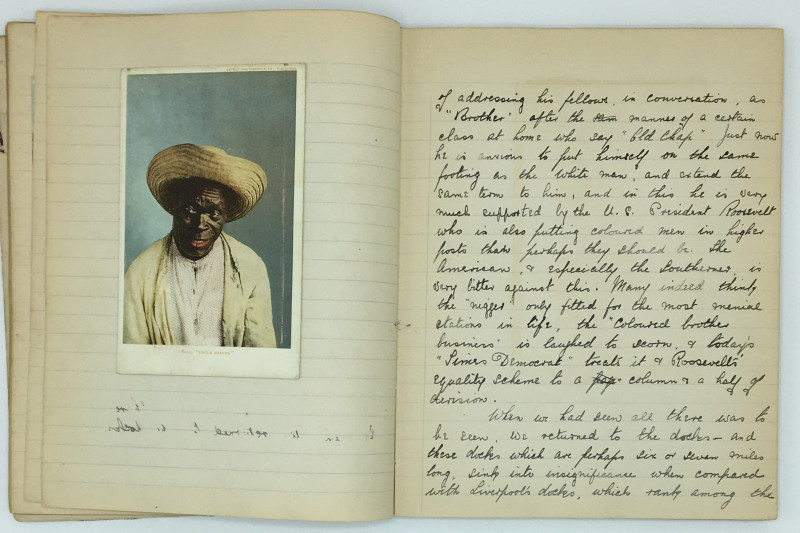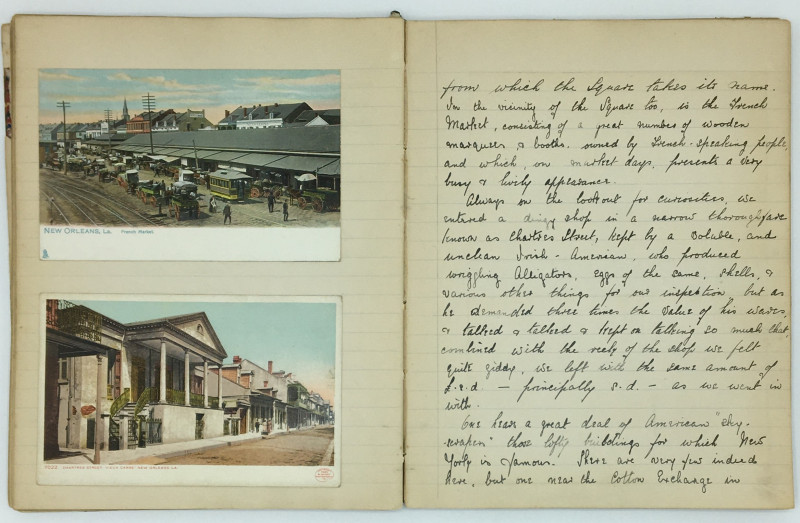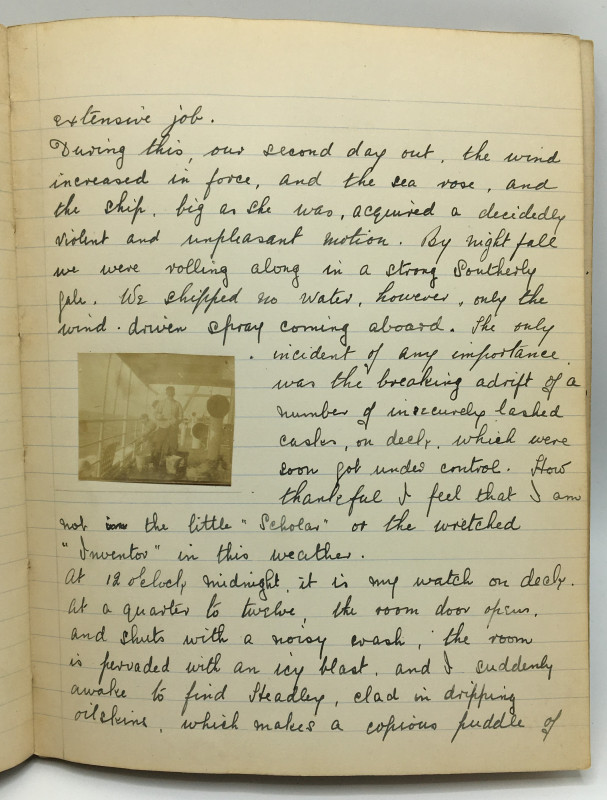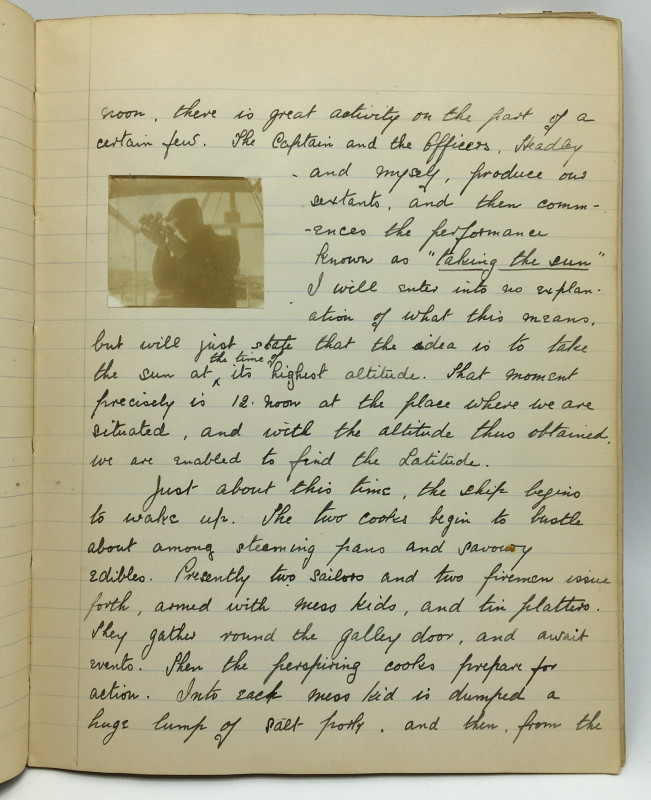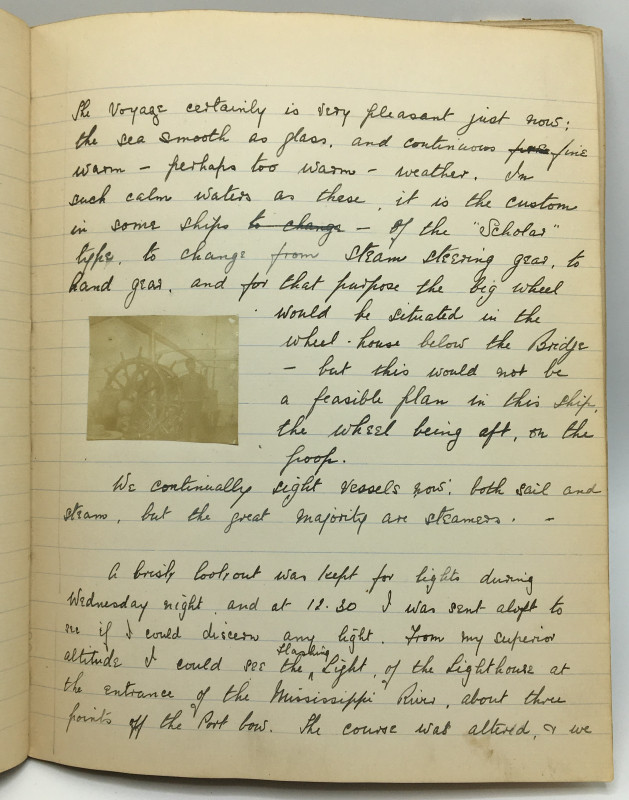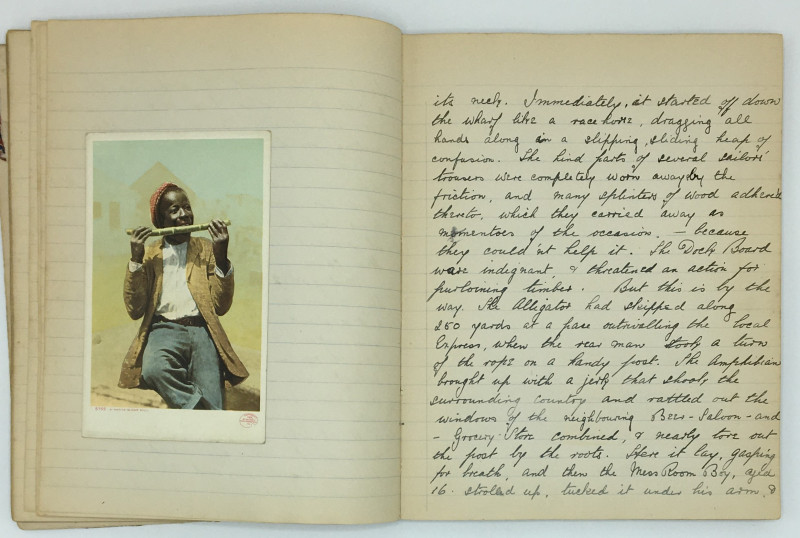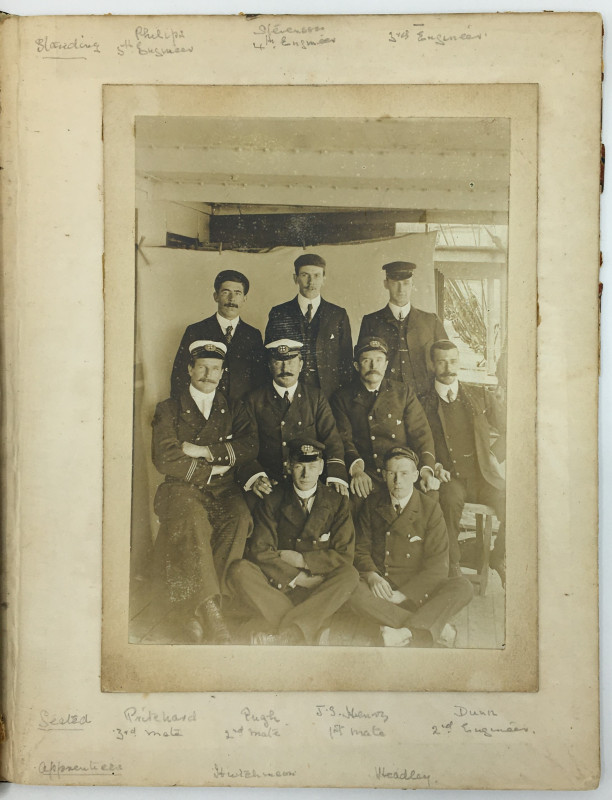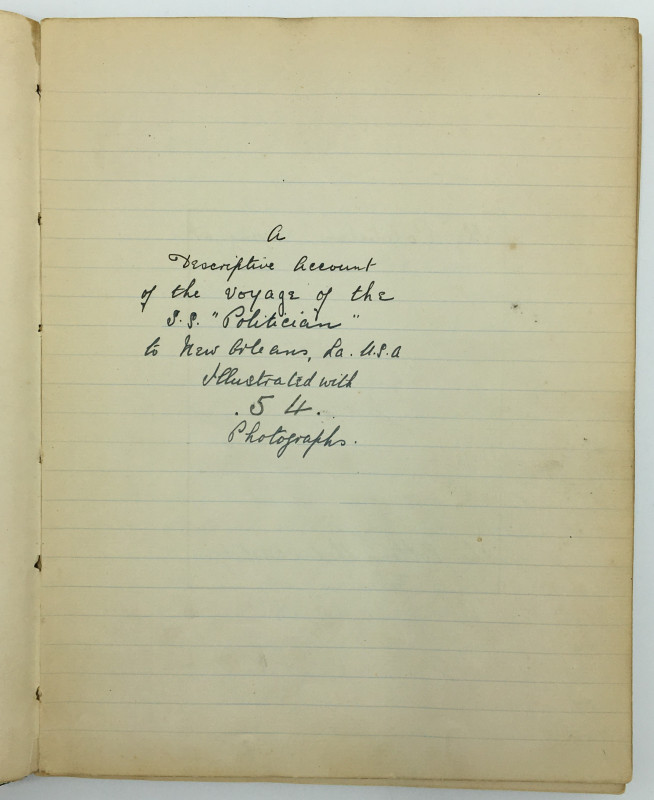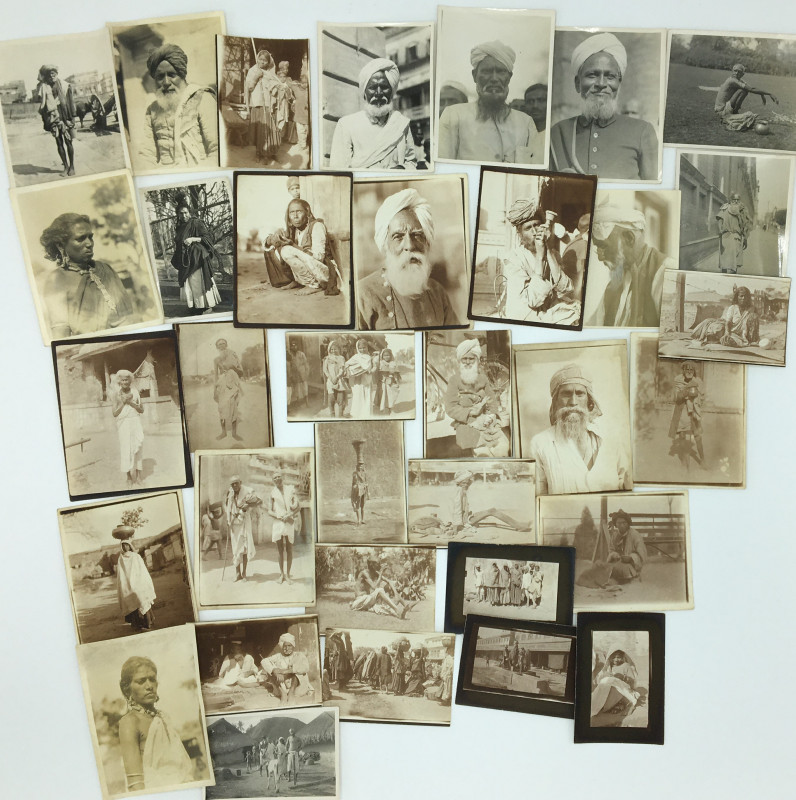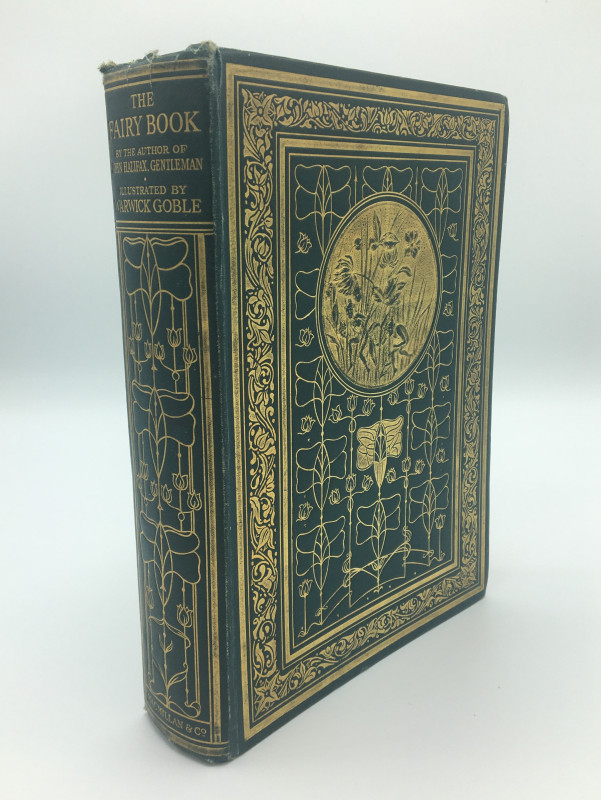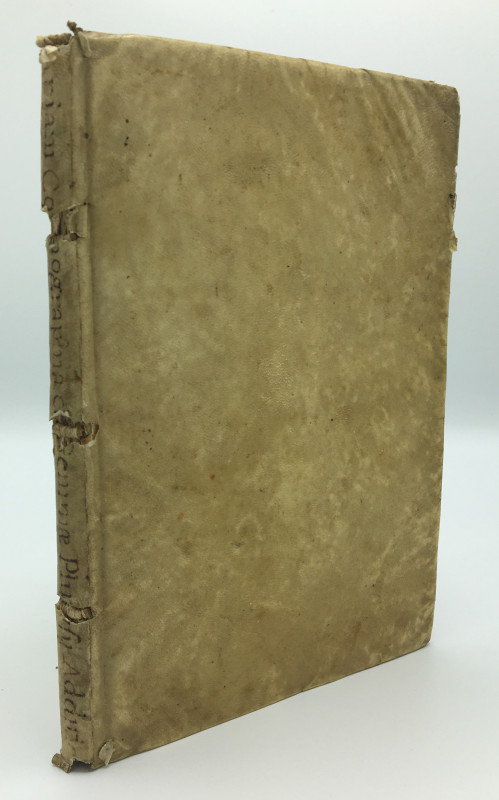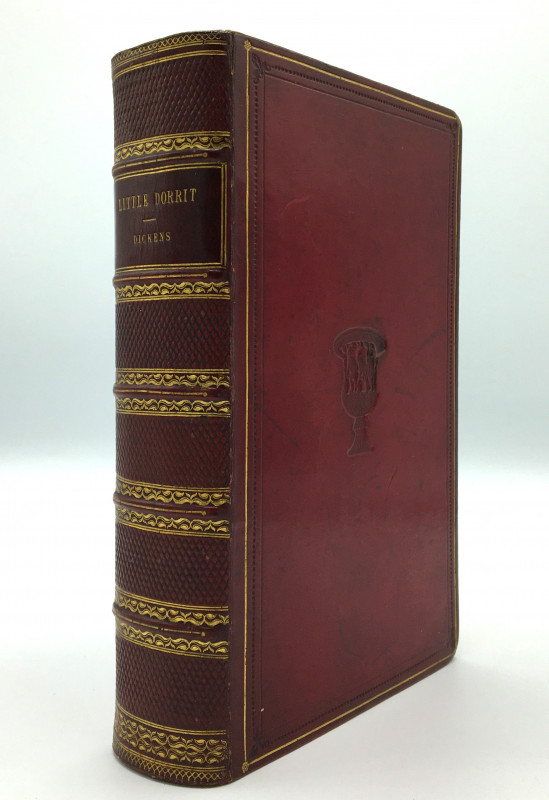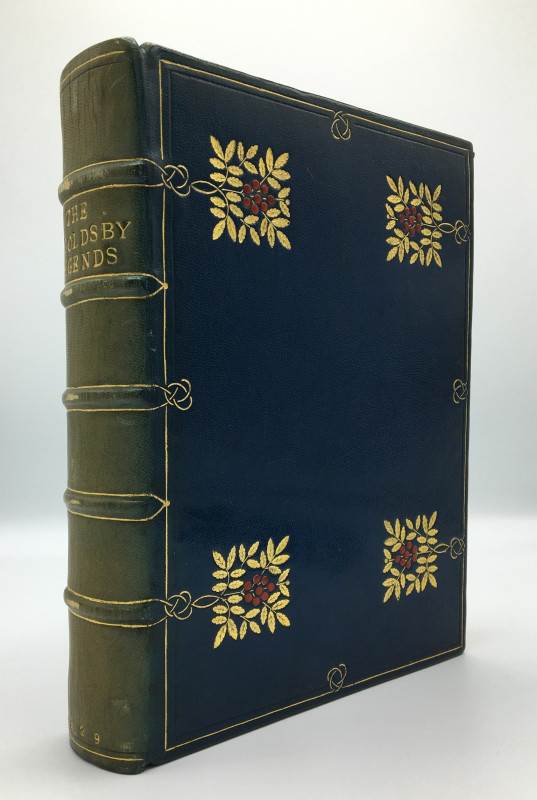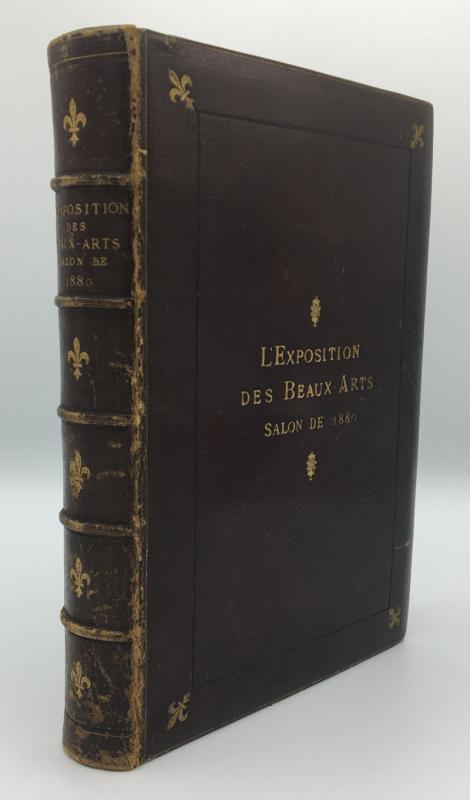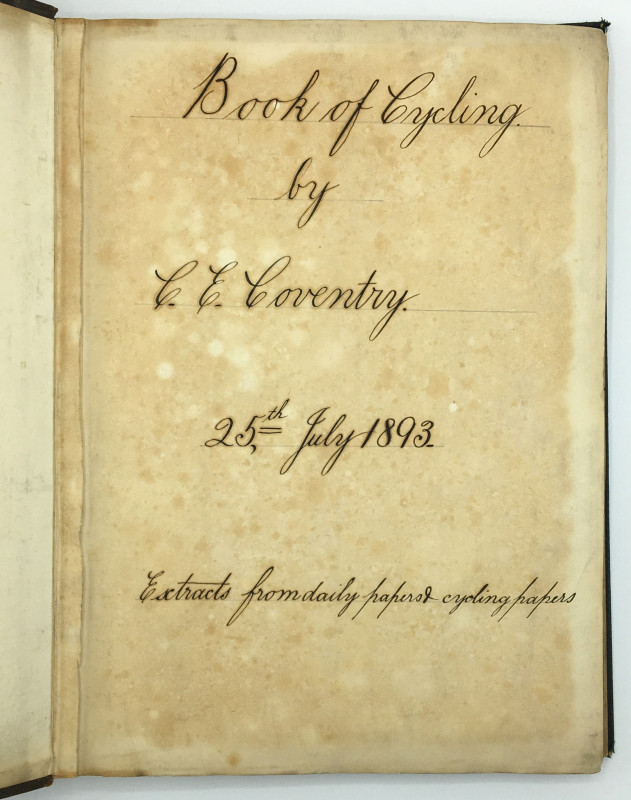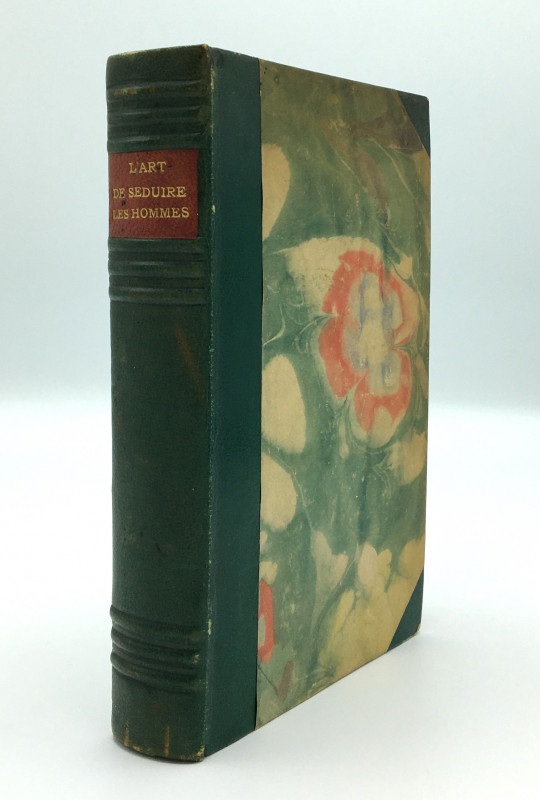[PHOTOGRAPHICALLY ILLUSTRATED MANUSCRIPT ACCOUNT OF A VOYAGE FROM LIVERPOOL TO NEW ORELEANS ABOARD THE 'SS POLITICIAN’]. A Descriptive Account of the Voyage of the S.S. “Politician” to New Orleans, La, U.S.A. Illustrated with 54 Photographs.





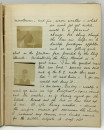




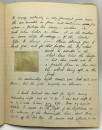


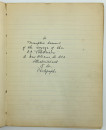
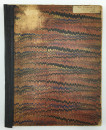
Book Description
Quarto (23 x 18cm). Lined notebook. Contemporary marbled boards with typed title label to the upper board. The contents comprising 135pp. with manuscript ink text largely to rectos only, incorporating 55 original sepia photographs, 13 colour postcards, a printed menu from the ship completed in manuscript, and three clippings, all with manuscript captions (the notebook completely full). The photographs all measuring approximately 5.5 x 4cm, excepting a larger portrait of the ship’s crew at the rear (15.5 x 11cm). The author’s name “James D. Hutchinson” and date “20/09/03” in ink to the front free endpaper. The spine lacking and replaced with black tape, although with the boards now again loose. The contents shaken and with cracking, although still remaining bound at the cords, with a removed label to the front pastedown, some abrasions to the front pastedown and front free endpaper, a little toning, and some fading to the sepia photographs, are otherwise in good order.
Dealer Notes
A well-illustrated account of the voyage of James Hutchinson - an apprentice engineer onboard the English steamship SS ‘Politician’ - from Liverpool to New Orleans, Louisiana at the turn of the twentieth century.
The account is divided into three parts; the first concerning the outbound voyage of the SS ‘Politician’ (a cargo steamer built by Swan and Hunter of Newcastle in 1898 and launched by Harrison of Liverpool that year) from Liverpool to New Orleans; the second detailing the author’s time spent in New Orleans itself; and the third recounting the return voyage.
The first and third sections provide detailed narratives of the working life of the ship’s crew and the vessel’s progress, including descriptions of “steaming along the coast of Florida”, passing the Bahama Islands, and entering the Mississippi River: “the Pilot, a typical Southerner, stepped aboard, and greeted the Captain with “An’ how aire yew, Cap?”. It was a splendid moonlit night... We proceeded at half speed, the huge ship going easily round the bends of the river. The air was chilly, & full of moisture which made the clothes quite damp, while above all was the reek of the swamps. And then the mosquitoes commenced to make their presence felt, and came aboard in swarms... Here and there we would pass little villages some of the inhabitants of which, both black and white, would stop for a moment to see us pass by”. The narrative also mentions other ships passed, the loading and unloading of goods including cotton, bricks, and oil cake, and the discovery of a stowaway. Throughout, Hutchinson places a particular focus on the characters and activities of the crew themselves, incorporating numerous photographs of those onboard, including a final group portrait of the officers, which includes Hutchinson himself.
The second section begins with an account of a strike in New Orleans by the “cotton screwmen and longshoremen”, noting that “200 non-union men, or “scabs” as they are called” had been brought in “from St. Louis... The negros resented this, and in a very active & vigourous manner”. He continues, “For daily large mobs of strikers gathered on shore to watch the ships in mid-stream work their cargo, and loudly threatened to shoot or knife any imported labourer who should have chance to fall into their clutches. Things began to assume a serious aspect, and on Saturday, Oct. 10th, when a larger & rowdier mob than usual had gathered, the armed Police had to be held in readiness, in case there should be a riot”. This is followed by a large fire which breaks out amongst 10,000 bales of cotton on the dockside, forcing ships out to sea, initially blamed on the strikers, but later transpiring to be caused by sparks from a passing locomotive, some further disturbances, and finally a successful mediation of the dispute by the city mayor.
Hutchinson then goes on to detail his experiences of the city of New Orleans, describing the city’s streets, buildings, “system of electric cars”, and residents (“always on the lookout for curiosities, we entered a dingy shop in a narrow thoroughfare known as Chartres Street, kept by a voluble, and unclean Irish-American, who produced wriggling alligators, eggs of the same, shells, & various other things for our inspection”; “One hears a great deal of American “sky-scrapers” those lofty building for which New York is famous. There are very few indeed here, but one near the Cotton Exchange in Gravier Street is worthy of note”), including the humorous story of the highly chaotic capture of an alligator (“the veracious crew of the “Orion” are taking it home to present to some Zoological Gardens”), and remarks regarding the lives and social position of African Americans: “There seem to be quite as many negroes, as white men. Of course the wealth lies amongst the whites, the negroes being of the labouring class. New Orleans was, many years ago, the principal centre of the American slave trade, & there can be no doubt but that the negroes in the States are for the most part descendants of the aforetime slaves. The negro has a great habit of addressing his fellows, in conversation, as “Brother”... Just now he is anxious to put himself on the same footing as the white man, and extend the same term to him, and in this he is very much supported by the U.S. President Roosevelt who is also putting coloured men in higher posts than perhaps they should be. The American, & especially the Southerner, is very bitter against this.”
These descriptions are augmented with photographs of street scenes, monuments, the French Cemetery (“one of the most peculiar of its kind.... It is custom for the French Catholic Sisters of Mercy, some white women, others negresses, to sit near the cemetery gates, where, with a large silver plated bowl ostentatiously reposing on their laps, they mutely solicit alms”), and one of “a negro resident of the district”.
An interesting and engaging narrative.
The account is divided into three parts; the first concerning the outbound voyage of the SS ‘Politician’ (a cargo steamer built by Swan and Hunter of Newcastle in 1898 and launched by Harrison of Liverpool that year) from Liverpool to New Orleans; the second detailing the author’s time spent in New Orleans itself; and the third recounting the return voyage.
The first and third sections provide detailed narratives of the working life of the ship’s crew and the vessel’s progress, including descriptions of “steaming along the coast of Florida”, passing the Bahama Islands, and entering the Mississippi River: “the Pilot, a typical Southerner, stepped aboard, and greeted the Captain with “An’ how aire yew, Cap?”. It was a splendid moonlit night... We proceeded at half speed, the huge ship going easily round the bends of the river. The air was chilly, & full of moisture which made the clothes quite damp, while above all was the reek of the swamps. And then the mosquitoes commenced to make their presence felt, and came aboard in swarms... Here and there we would pass little villages some of the inhabitants of which, both black and white, would stop for a moment to see us pass by”. The narrative also mentions other ships passed, the loading and unloading of goods including cotton, bricks, and oil cake, and the discovery of a stowaway. Throughout, Hutchinson places a particular focus on the characters and activities of the crew themselves, incorporating numerous photographs of those onboard, including a final group portrait of the officers, which includes Hutchinson himself.
The second section begins with an account of a strike in New Orleans by the “cotton screwmen and longshoremen”, noting that “200 non-union men, or “scabs” as they are called” had been brought in “from St. Louis... The negros resented this, and in a very active & vigourous manner”. He continues, “For daily large mobs of strikers gathered on shore to watch the ships in mid-stream work their cargo, and loudly threatened to shoot or knife any imported labourer who should have chance to fall into their clutches. Things began to assume a serious aspect, and on Saturday, Oct. 10th, when a larger & rowdier mob than usual had gathered, the armed Police had to be held in readiness, in case there should be a riot”. This is followed by a large fire which breaks out amongst 10,000 bales of cotton on the dockside, forcing ships out to sea, initially blamed on the strikers, but later transpiring to be caused by sparks from a passing locomotive, some further disturbances, and finally a successful mediation of the dispute by the city mayor.
Hutchinson then goes on to detail his experiences of the city of New Orleans, describing the city’s streets, buildings, “system of electric cars”, and residents (“always on the lookout for curiosities, we entered a dingy shop in a narrow thoroughfare known as Chartres Street, kept by a voluble, and unclean Irish-American, who produced wriggling alligators, eggs of the same, shells, & various other things for our inspection”; “One hears a great deal of American “sky-scrapers” those lofty building for which New York is famous. There are very few indeed here, but one near the Cotton Exchange in Gravier Street is worthy of note”), including the humorous story of the highly chaotic capture of an alligator (“the veracious crew of the “Orion” are taking it home to present to some Zoological Gardens”), and remarks regarding the lives and social position of African Americans: “There seem to be quite as many negroes, as white men. Of course the wealth lies amongst the whites, the negroes being of the labouring class. New Orleans was, many years ago, the principal centre of the American slave trade, & there can be no doubt but that the negroes in the States are for the most part descendants of the aforetime slaves. The negro has a great habit of addressing his fellows, in conversation, as “Brother”... Just now he is anxious to put himself on the same footing as the white man, and extend the same term to him, and in this he is very much supported by the U.S. President Roosevelt who is also putting coloured men in higher posts than perhaps they should be. The American, & especially the Southerner, is very bitter against this.”
These descriptions are augmented with photographs of street scenes, monuments, the French Cemetery (“one of the most peculiar of its kind.... It is custom for the French Catholic Sisters of Mercy, some white women, others negresses, to sit near the cemetery gates, where, with a large silver plated bowl ostentatiously reposing on their laps, they mutely solicit alms”), and one of “a negro resident of the district”.
An interesting and engaging narrative.
Author
HUTCHINSON, James D.:
Date
1903
Publisher
[Original manuscript].
Friends of the PBFA
For £10 get free entry to our fairs, updates from the PBFA and more.
Please email info@pbfa.org for more information
